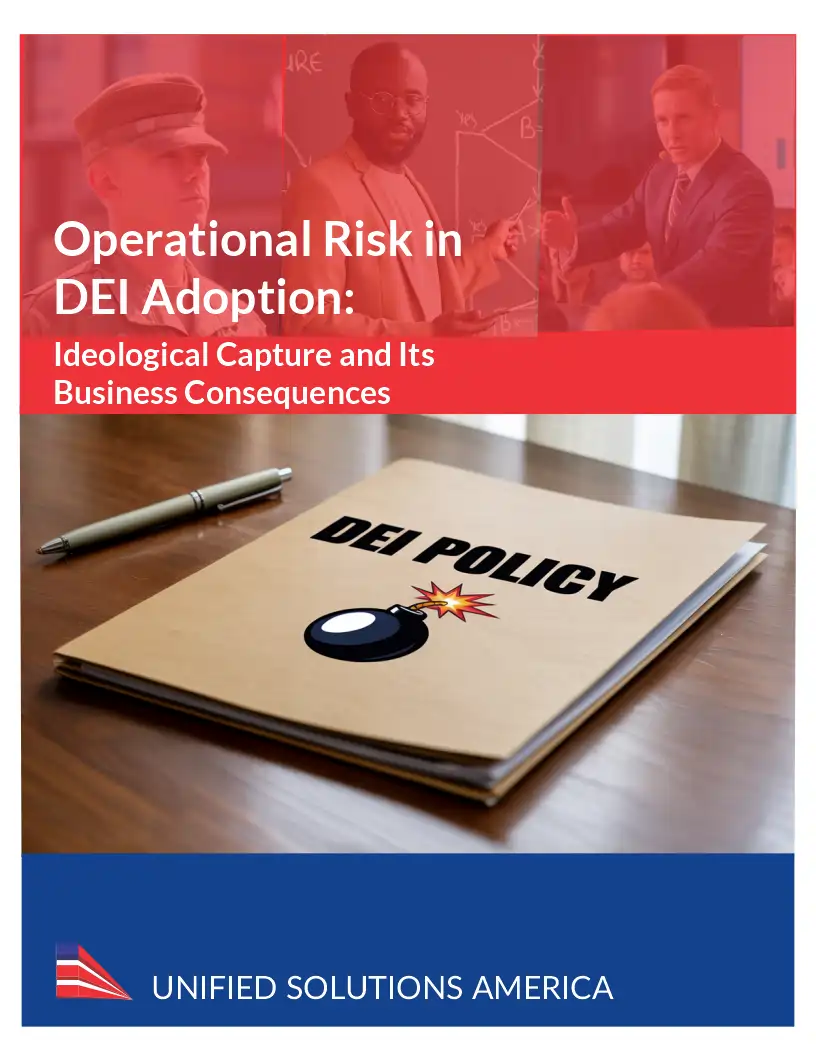Operational Risk in DEI Adoption

Executive Summary/Abstract
Over the past two decades, Diversity, Equity, and Inclusion (DEI) programs have become standard practice across academic, nonprofit, and corporate institutions. Initially adopted as a legal hedge against discrimination claims, DEI soon evolved into a full-fledged internal infrastructure, complete with consultants, performance metrics, and bureaucracies designed to measure and promote workforce diversity. The assumption was that such programs would both reduce liability and improve organizational efficiency by fostering collaboration across demographic lines.
However, beneath the surface of HR compliance and corporate goodwill lies a more profound issue: DEI is not a neutral set of best practices. It is rooted in a political ideology that stems from the academic theory of social equity, developed by scholars like H. George Frederickson. This framework was deliberately embedded into public administration literature as a moral imperative, a normative goal that seeks not procedural fairness (equality), but outcome equalization (equity). Over time, this ideology expanded in scope, influencing everything from public policy to private business practices, and eventually materializing as the “E” in DEI.
The intellectual scaffolding of DEI is closely tied to what scholars like Sensoy and DiAngelo call Critical Social Justice, a worldview that sees society as structurally biased in favor of certain identity groups. On this view, American institutions, from language and values to law and science, are constructed to benefit white, male, heterosexual, Christian citizens at the expense of everyone else. DEI programs, therefore, are not merely anti-discrimination trainings; they carry an embedded imperative to reshape society through activism. Employees trained under this framework are not simply educated, they are socialized into a lifelong commitment to “challenge injustice,” often through institutional advocacy.
The result is ideological capture. Like regulatory capture, where a regulator is co-opted to serve the industry it regulates, ideological capture occurs when an institution is redirected to serve the interests of an embedded political worldview. DEI programs introduce this risk by encouraging employees to prioritize activism over excellence, identity over merit, and political alignment over institutional mission. The internal disruption this causes has been documented in public controversies, such as the revolt at Penguin Random House over publishing Jordan Peterson, where DEI-trained staff pressured leadership to conform to ideological expectations.
Given the shifting legal and cultural climate, the continued implementation of DEI programs poses growing risk: public relations disasters, internal division, legal liability, and degradation of performance. In response, a clean departure from ideological entanglements and a return to mission-focused governance is recommended.
A mission-focused company does not take political stances or embed activism into its operations. It hires, evaluates, and promotes based solely on merit and measurable performance. This approach, rooted in equal opportunity and procedural fairness, creates a healthy work environment, avoids legal pitfalls, and enables the institution to maintain focus on its core objectives. Companies like Coinbase have adopted this approach with success, contrasting favorably with activist-entangled organizations facing internal strife.
In a competitive global economy, the institutions that will thrive are those that resist ideological drift and remain resolutely focused on their mission. The evidence is mounting: DEI may be industry standard, but it is not best practice.
Read Full White Paper
(Password Required)


